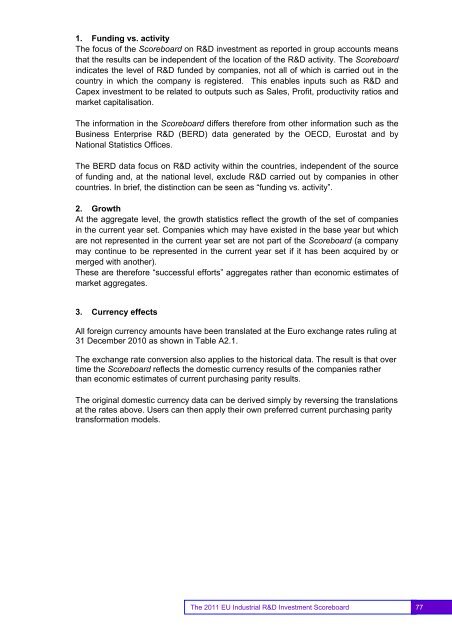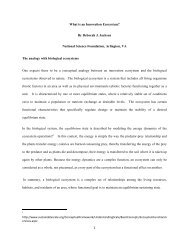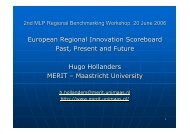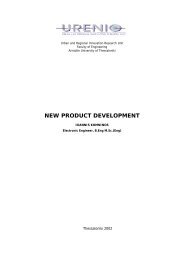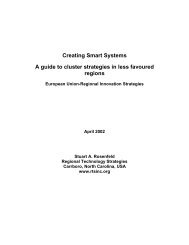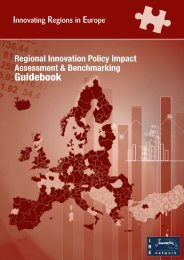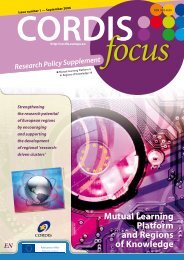EU Industrial R&D Investment Scoreboards 2011
EU Industrial R&D Investment Scoreboards 2011
EU Industrial R&D Investment Scoreboards 2011
You also want an ePaper? Increase the reach of your titles
YUMPU automatically turns print PDFs into web optimized ePapers that Google loves.
1. Funding vs. activityThe focus of the Scoreboard on R&D investment as reported in group accounts meansthat the results can be independent of the location of the R&D activity. The Scoreboardindicates the level of R&D funded by companies, not all of which is carried out in thecountry in which the company is registered. This enables inputs such as R&D andCapex investment to be related to outputs such as Sales, Profit, productivity ratios andmarket capitalisation.The information in the Scoreboard differs therefore from other information such as theBusiness Enterprise R&D (BERD) data generated by the OECD, Eurostat and byNational Statistics Offices.The BERD data focus on R&D activity within the countries, independent of the sourceof funding and, at the national level, exclude R&D carried out by companies in othercountries. In brief, the distinction can be seen as “funding vs. activity”.2. GrowthAt the aggregate level, the growth statistics reflect the growth of the set of companiesin the current year set. Companies which may have existed in the base year but whichare not represented in the current year set are not part of the Scoreboard (a companymay continue to be represented in the current year set if it has been acquired by ormerged with another).These are therefore “successful efforts” aggregates rather than economic estimates ofmarket aggregates.3. Currency effectsAll foreign currency amounts have been translated at the Euro exchange rates ruling at31 December 2010 as shown in Table A2.1.The exchange rate conversion also applies to the historical data. The result is that overtime the Scoreboard reflects the domestic currency results of the companies ratherthan economic estimates of current purchasing parity results.The original domestic currency data can be derived simply by reversing the translationsat the rates above. Users can then apply their own preferred current purchasing paritytransformation models.77The <strong>2011</strong> <strong>EU</strong> <strong>Industrial</strong> R&D <strong>Investment</strong> Scoreboard 77


